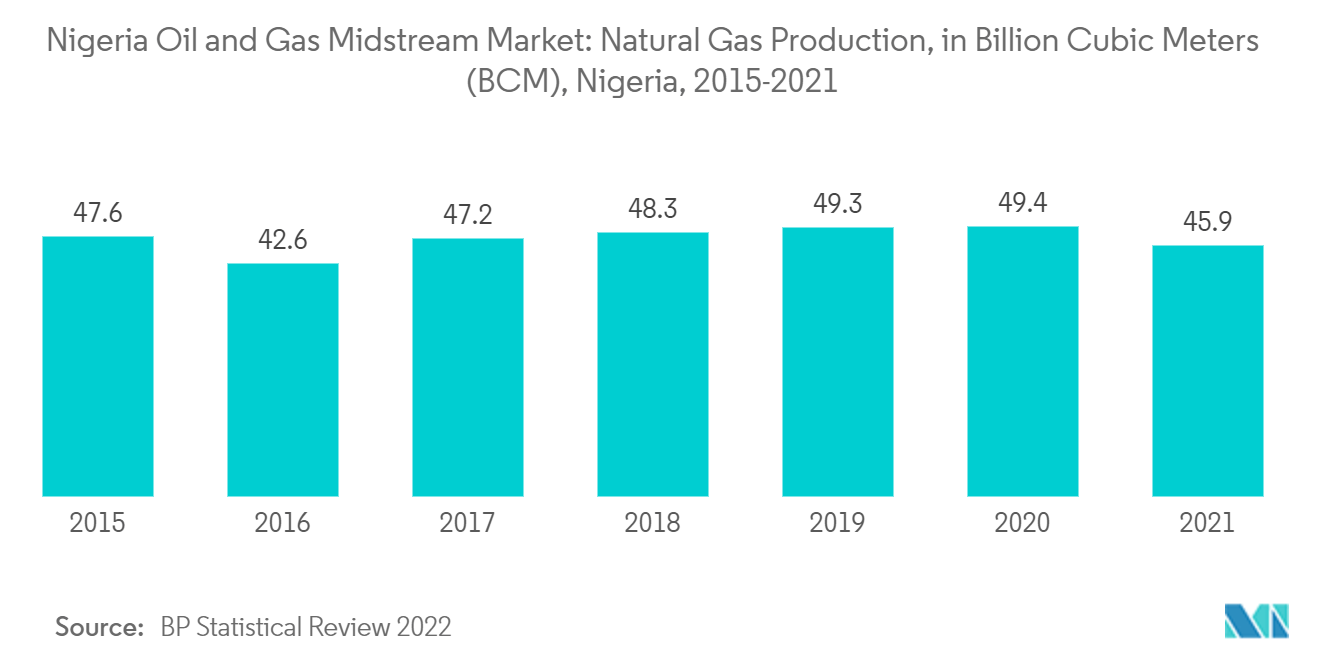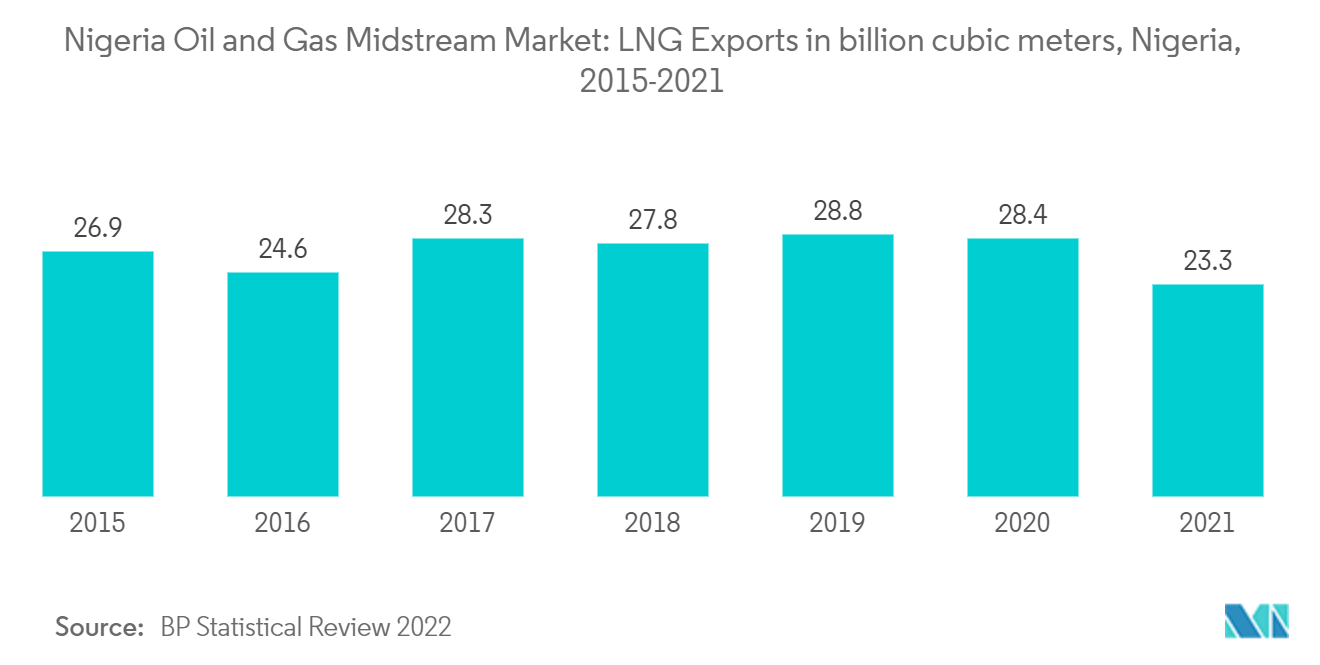Market Trends of Nigeria Oil and Gas Midstream Industry
Transportation Sector to Dominate the Market
- Pipelines dominate the oil and gas transportation industry. The oil and gas supply in the country is expected to exceed the existing transportation capacity, thus requiring expansions and the construction of new pipelines.
- As of December 2022, according to the Global Energy Monitor, there were about 3200 km of operating gas pipelines and 2535 km of operating oil pipelines in the country to transport crude oil and gas. With the increasing demand for petroleum products, new pipeline infrastructure is required.
- The rising energy demand has resulted in an increase in pipeline construction and transportation facilities as the continuous need for energy demands new oil and gas infrastructure. This increasing energy demand has increased new terminal and pipeline construction, including oil and gas pipelines and transportation.
- In July 2022, Algerian, Nigerian, and Nigerian Energy Ministers signed an agreement for the construction of a 4,000-kilometer gas pipeline across the Sahara Desert that is expected to supply Europe with additional gas.
- Natural gas production in Nigeria reached 45.9 billion cubic meters at the end of 2021. The increased consumption incentivizes the investors for the required increase in capacity and improves future investments, thereby boosting industry growth.
- Hence, pipeline capacity is expected to increase slightly during the forecast period due to an increase in the consumption of oil and gas and rising investment in the sector.

Increasing Investment in the Pipelines, Along with Growing LNG Exports, is Expected to Drive the Market
- According to the National Bureau of Statistics, Nigeria's crude oil exports jumped to about NGN 5.6 trillion in the first quarter of 2022, reflecting a 200% increase compared to the same period in 2021. Similarly, Nigeria is pushing for more natural gas exports to European countries as they look for alternative gas-supplying nations due to the sanctions on natural gas imports from Russia. In the first quarter of 2022, the revenue generated from export and feedstock sales to the Nigeria Liquefied Natural Gas Limited (NLNGL) hit USD 243.57 million, surpassing receipts from crude oil exports by 259.4%.
- Further, the government of Nigeria is also focusing on increasing the domestic consumption of natural gas by developing pipelines for industries and the residential sector. For instance, in 2020, Nigeria began constructing a USD 2.8 billion gas pipeline project, the biggest in the country's history. The 614-kilometer-long pipeline will run from Ajaokuta to Kano under the auspices of the Nigerian National Petroleum Corporation (NNPC).
- The West African Gas Pipeline is an operating pipeline that delivers gas from Nigeria's Niger Delta to West African nations such as Benin, Togo, and Ghana. The length of the pipeline is approximately 677 kilometers (421 miles), with a capacity of 200 million cubic feet per day. This pipeline is one of the primary pipelines in the region, as it connects many countries.
- The LNG exports from Nigeria increased from 26.9 billion cubic meters in 2015 to 23.3 billion cubic meters in 2021.
- In terms of the pipeline, Nigeria aims to transport more liquefied natural gas to Europe as the countries in Europe are looking for an alternative to the dwindling supplies of Russian gas, which will aid the midstream market. For instance, as of 2022, the Nigeria LNG facility is undergoing expansion to add a seventh LNG processing unit and supporting infrastructure to increase its total production capacity from 22 million metric tons per annum (MTPA) to 30 MTPA.
The Nigerian oil and gas midstream industry is expected to grow slightly over the forecast period due to the anticipated increase in production, consumption, and exports of gas and an increase in investment in the country's pipeline infrastructure.

